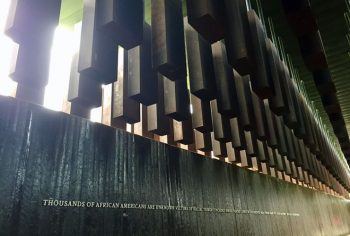Lisa Oliver in Boston Review:
 Relics have the power to galvanize and unify people for diverse ideological ends. A broad category of objects, relics can be anything from the body parts of holy figures to objects intimately associated with their lives. They have long been central to many religions, prized for their ability to transmit the aura and sanctity of those to whom they belonged. Relics of Saint Teresa of Avila were so valued, for example, that when her body was exhumed for canonization in 1622, clerics smuggled away her fingers and toes, sometimes in their mouths. But there are secular relics as well, from clippings of Marie Antoinette’s hair to the preserved corpse of Vladimir Lenin. Through sheer proximity to these relics, the faithful feel the full solemnity of the deceased’s presence and their greater impact on history.
Relics have the power to galvanize and unify people for diverse ideological ends. A broad category of objects, relics can be anything from the body parts of holy figures to objects intimately associated with their lives. They have long been central to many religions, prized for their ability to transmit the aura and sanctity of those to whom they belonged. Relics of Saint Teresa of Avila were so valued, for example, that when her body was exhumed for canonization in 1622, clerics smuggled away her fingers and toes, sometimes in their mouths. But there are secular relics as well, from clippings of Marie Antoinette’s hair to the preserved corpse of Vladimir Lenin. Through sheer proximity to these relics, the faithful feel the full solemnity of the deceased’s presence and their greater impact on history.
I was reminded of the power of secular relics during a recent visit to Montgomery, Alabama, where the newly-opened National Memorial for Peace and Justice uses unlikely relics to force a reckoning with our history of racial violence, and where, in opposition, the First White House of the Confederacy exploits relics to whitewash that same history.
The National Memorial for Peace and Justice was constructed to honor over 4,400 African Americans lynched between 1877 and 1950. It sits just over a mile from the First White House of the Confederacy, formerly the home of Confederate president Jefferson Davis, who owned over a hundred slaves at the outbreak of the Civil War. The proximity of these two sites reflects more broadly on Montgomery as a city of contested historical memory. Likewise, the Dexter Avenue King Memorial Baptist Church, where Martin Luther King, Jr., served as pastor from 1954 to 1960, is just a stone’s throw from a monument to the inauguration of Davis as president of the Confederacy; and the headquarters of the Equal Justice Initiative—a criminal justice reform nonprofit that runs the lynching memorial—is located in a former slave warehouse.
But a paired viewing of the National Memorial for Peace and Justice and the First White House of the Confederacy illuminates particularly well the chasm in how relics continue to be used to narrate—or silence—the interconnected histories of slavery, the Civil War, and the ideology of white supremacy.
More here. (Note: Throughout February, we will publish at least one post dedicated to Black History Month)
